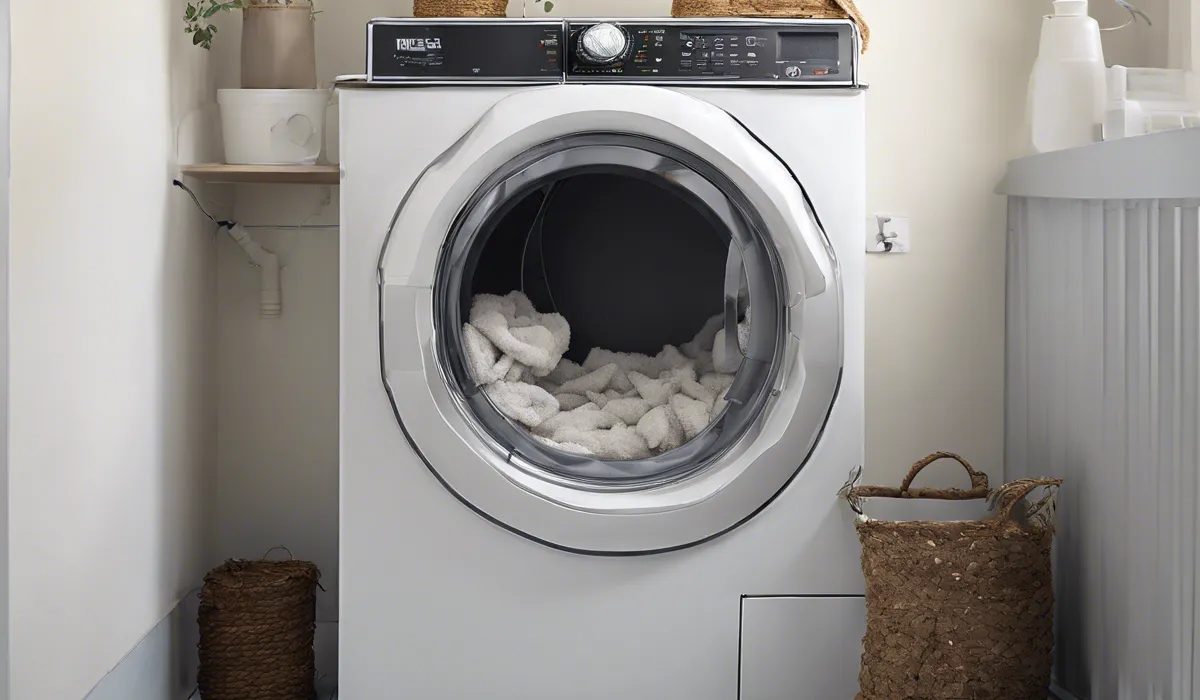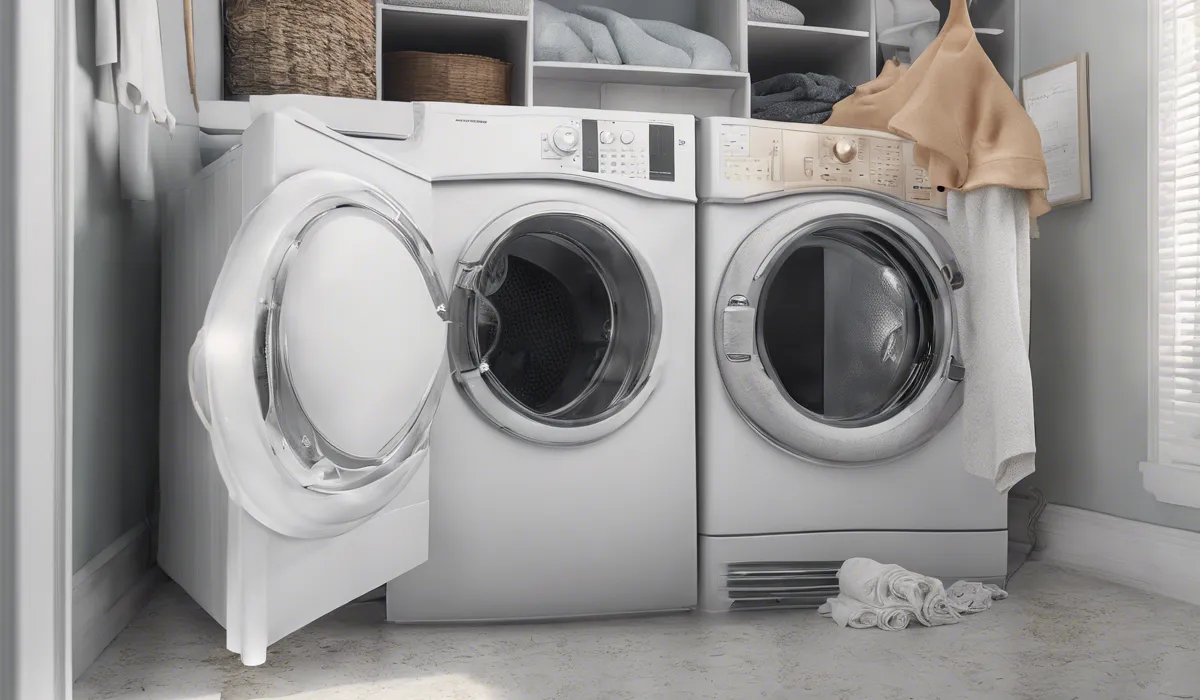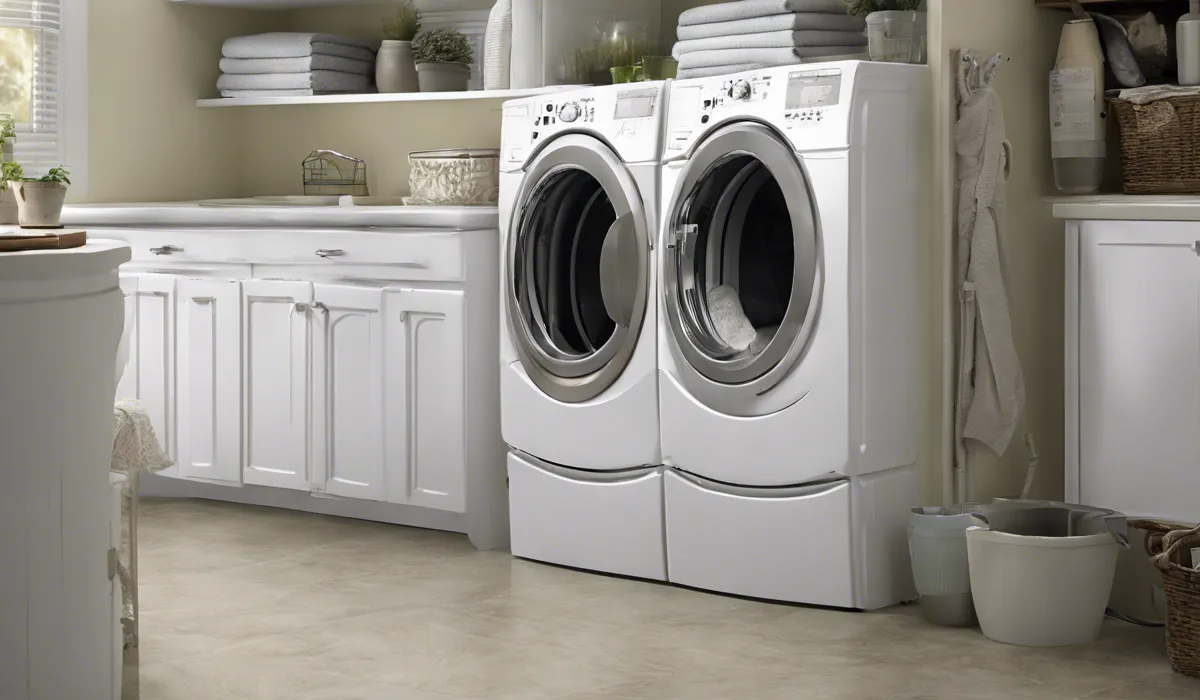To eliminate a mildew smell from your dryer, clean the lint trap and drum using a mixture of hot water and vinegar. Then, run a dry cycle with a few dry towels to absorb any remaining odor. Ensure proper ventilation to prevent future mildew growth.
Identify the Source of the Mildew Smell

Check the Lint Trap for Obstructions
One of the first places to investigate when you detect a mildew smell is the lint trap. A clogged lint trap can harbor moisture and restrict airflow, both of which can contribute to unpleasant odors.
Pull out the lint trap and remove any accumulated lint by hand. Do not forget to reach into the cavity where the lint trap sits to remove any debris that may have bypassed the trap itself.
Inspect the Drum for Wet or Damp Items
Leftover wet or damp clothing is a common culprit for mildew smells. Check the drum carefully for any forgotten items, especially small ones like socks that can easily go unnoticed.
Remove any such articles and dry them properly to prevent odors from setting in.
Examine the Dryer Vent and Exhaust
The dryer vent and exhaust play a crucial role in removing hot, moist air. When these become blocked, it can lead to a buildup of humidity within the dryer.
Inspect these areas for any blockages, such as lint or external debris, that might prevent proper airflow.
If you are not comfortable doing this yourself, consider hiring a professional to ensure these components are clear and functioning correctly.
Search for Water or Leaks Near the Dryer
Standing water or leaks in the vicinity of your dryer can contribute to a musty environment.
Look around the base of the dryer for any signs of water. If you find moisture, it is important to locate the source of the leak and address it immediately to prevent further damage and odors.
Assess the Washing Machine
Moisture from your washer can transfer to the dryer if clothes are not sufficiently spun.
Make sure your washing machine is working correctly and spinning out as much water as possible before transferring clothes to the dryer. This will help reduce the chances of mildew smell due to excess moisture.
Clean and Deodorize the Dryer

Deep Clean the Lint Trap and Slot
After removing the lint from the trap, use a vacuum with a hose attachment to suction out any remaining lint from the slot.
A long brush designed for lint trap cleaning can also be used to dislodge any stubborn particles that the vacuum may not reach.
Wipe the Drum with a Detergent Solution
Create a cleaning solution using warm water and a mild detergent. Dampen a cloth with this mixture and thoroughly wipe the interior of the drum.
Pay special attention to the seams and any other areas where lint and debris might accumulate. Rinse the cloth as needed to ensure you’re not spreading the dirt around.
Sanitize with White Vinegar
White vinegar is a natural deodorizer that can help to neutralize mildew smells. Soak a cloth in white vinegar and use it to rub the inside of the drum.
The acetic acid in vinegar will help to break down odor-causing residues and leave your dryer smelling fresh.
Run an Empty Hot Air Cycle
Place a few clean towels soaked in vinegar into the dryer and run an empty cycle using hot air.
The combination of heat and vinegar will work to eliminate any lingering smells. Make sure to use the highest heat setting that is safe for the towels you are using.
Clean the Vent and Hose
Disconnect the dryer hose and use a vent cleaning brush to remove lint buildup from both the hose and the vent duct.
If the duct is long or has many turns, a professional cleaning may be necessary. Reattach everything securely once you’re finished.
Prevent Future Mildew Smells

Remove Clothes Promptly
As a best practice, always remove your clothes from the dryer as soon as the cycle finishes.
Letting damp clothes sit can promote the growth of mildew and the development of odors.
Air Out the Dryer
After each use, leave the dryer door open for a while to allow the interior to air out. This helps to evaporate any remaining moisture and prevents the growth of mildew and other odor-causing bacteria.
Ensure Good Ventilation
Maintaining proper ventilation in the laundry area is crucial. This means not only making sure your dryer vent is clear but also ensuring the room itself has good airflow.
Use fans or open windows to circulate air and keep the area dry.
Regular Cleaning Routine
Develop a routine where you clean the lint trap after every use and check the dryer vent periodically for lint buildup.
This habit will help keep your dryer running efficiently and odor-free.
Use Scented Dryer Accessories
For a fresh scent, consider using dryer sheets or wool balls with a few drops of essential oils. These can not only make your clothes smell pleasant but can also help to prevent static cling.
FAQs About Getting Mildew Smell Out of Dryer
How can I clean the lint trap to remove a mildew smell?
To clean the lint trap, remove it from the dryer, then wash it with hot water and vinegar to eliminate mildew smells.
What is the best solution to clean the dryer drum for mildew odor?
A mixture of hot water and vinegar is effective for cleaning the dryer drum and removing mildew odors.
How do I run a dryer cycle to get rid of mildew smells?
Run a dry cycle with a few clean, dry towels to absorb any remaining odor after cleaning the dryer.
Can proper ventilation prevent mildew growth in dryers?
Yes, ensuring proper ventilation for your dryer can help prevent future mildew growth and associated odors.
Are there any additional steps to take after cleaning to keep my dryer smelling fresh?
After cleaning, regularly check and clean the lint trap, and ensure the dryer is properly ventilated to maintain a fresh smell.
Final Thoughts
Eliminating a mildew odor from your dryer requires cleaning the lint trap and drum with a hot water and vinegar solution.
Afterwards, run a dry cycle with dry towels to remove any lingering smell. Maintaining good airflow is essential to deter future mildew growth and keep your dryer smelling fresh.
